K98 Bayonet -
The Karabiner 98 Kurz (often abbreviated Kar98k, K98, or K98k) was a bolt-action rifle adopted as the standard infantry
rifle in 1935 by the German Wehrmacht, and was one of the final developments in the long line of Mauser military
rifles.
Most of these bayonets were designed for combat. However there were some versions that were created
for showing at social functions. These were knwon as parade bayonets.
Some of these specimens could be highly adorned with features such as stag handles.
|
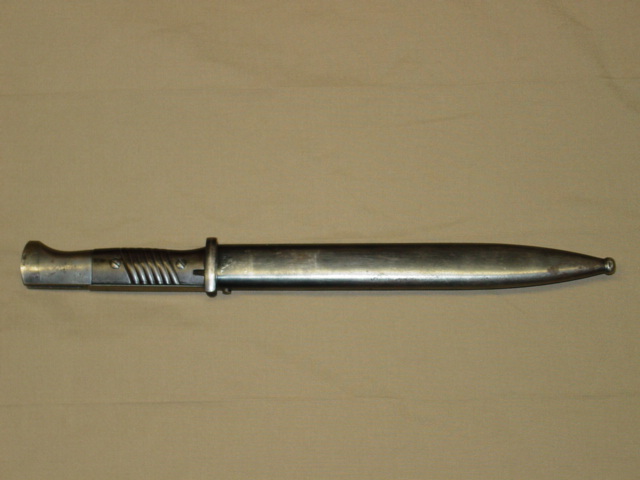
The design of this bayonet consisted of bakelite handles attached to the tabg via the use of two
rivets. The body was ribbed to provide a better grip. Some other styles of this bayonet included
wooden smooth grips and all metal grips.
The pommel was of "dove" head style. A button is found on one side of the pommel. Pressing it
causes the lugnut locking mechanism to disengage, allowing the bayonet to be removed from the
rifle.
The scabbard was of metal construction. Painted black. A hook was attached to the side so the
leather frog can be secured to the bayonet. The purpose of the frog was to secure the bayonet
to the belt . One side
of the scabbard is stamped with the name of the company "Berg & Co". Just below that is the
date of manufacturing, 1939. The same company name is located at the base of the blade.
|
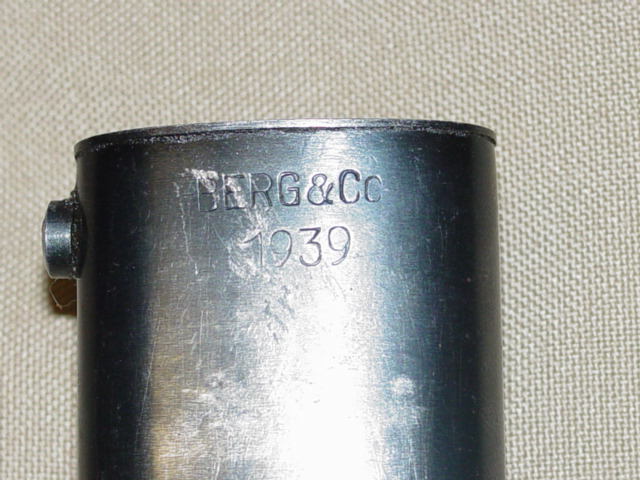
The pommel is stamped with two waffen proofs. They consist of the small lines in the shape
of an eagle. proof markings were found in
the scabbard as well.
|
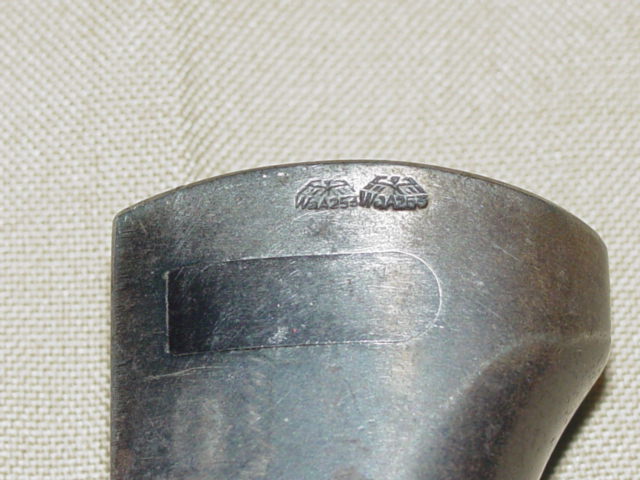 |
This page is a recognition and identification guide for German bayonets. Multiple
detailed photos of a specific sample are provided. Descriptions point out specific
points that should be noted.
One of the most commonly asked questions is "How much is my German bayonet worth?".
A price guide is included here to address this question. The value of the Nazi bayonets is
reviewed over a period of several years. A trend can be observed. The present worth
of the police sword in the collector's market is illustrated.
This service is provided free of charge to the visitor/enthusiast courtesy of
MilitaryItems.com,
a company dedicated
to the preservation of military history and to providing quality military antiques and
collectibles to museums, institutions and the general public.
|
|
|
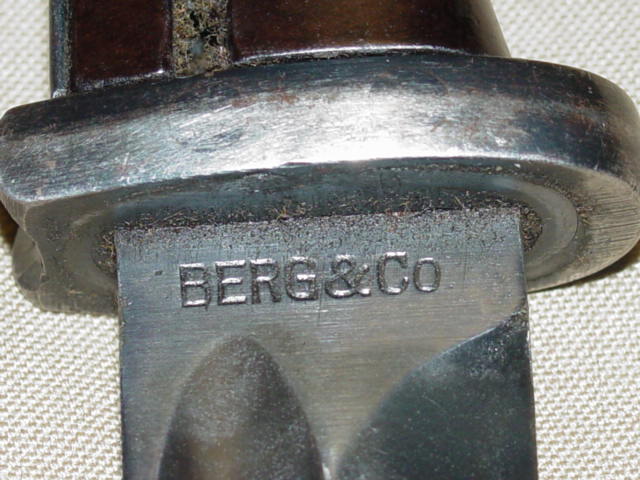 |
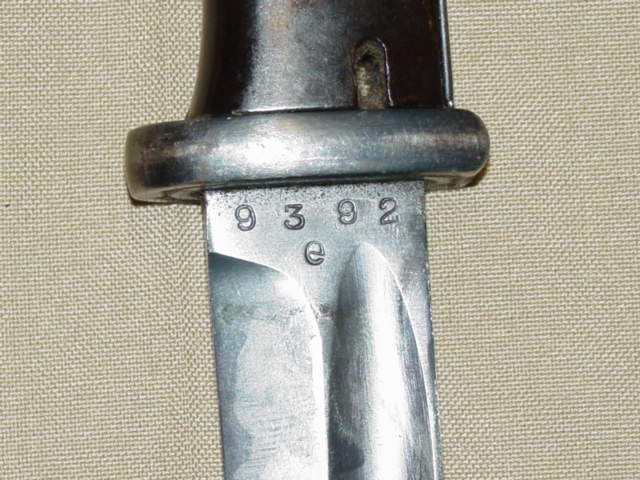
The Germans were very precise in the control of manufacturing of all types of war
related items. Bayonets were no exception. As it can be seen in the photo above and the'
one below. A production number has been stamped at the base of the blade and the throat
of the handle. The numbers are identical, meaning that these two pieces were matched
from the point of manufacturing. This concept is known in the collector's world as
"matching numbers".
As it can be imagined, keeping the two items together all during the war and after
is a hard thing to do. This is why matching number bayonets are more desirable and
harder to find.
Notice that the letter "e" is placed under the number of both items. This is a
manufacturing marking.
|
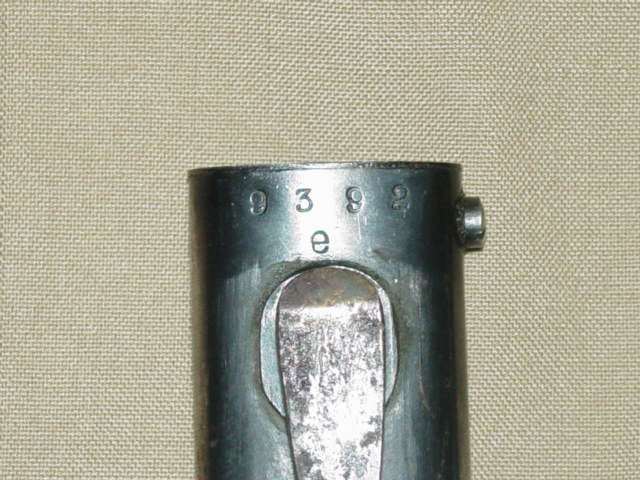 |
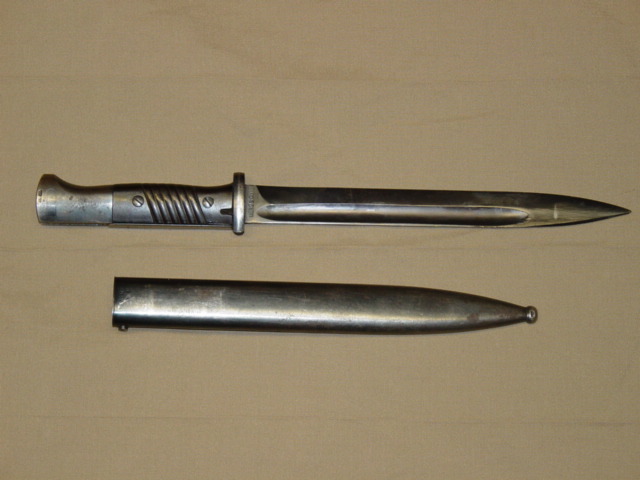 |
This edge weapon is currently being
reproduced. It is becoming more difficult to be
able to tell the fake ones from the real ones because the quality of the reproductions is improving. The
collector must become familiarized with the construction style and materials employed in the manufacturing
of edge weapons. Attention to the details is critical in order to be able to determine the authenticity
of the item.
If you have an interest is seeing other edge weapons of the Third Reich, you can do so by going to our
WWII German Edge Weapons identification guide. Where
we cover blades from the Heer (Army), Navy (Kriegsmarine), Air Force (Luftwaffe) and other organizations.
|





